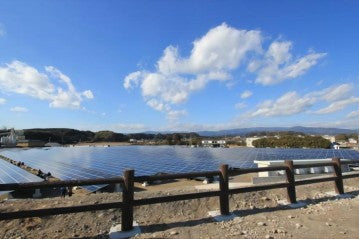
With the growing interest in renewable energy and sustainable living, off-grid solar systems have become an attractive option for individuals seeking energy independence. Harnessing the power of the sun, these systems provide a reliable and eco-friendly alternative to traditional energy sources. In this article, we will discuss the key steps involved in designing an off-grid solar system, empowering you to embark on a DIY project that aligns with your energy needs and environmental goals.
1. Equipment and Tools Needed for a DIY Off Grid Solar System
Before diving into the design process, it's essential to gather the necessary equipment and tools for a successful off-grid solar system installation. Here's a list of the basic components you'll need:
- Solar panels: High-quality photovoltaic (PV) panels that convert sunlight into electricity.
- Deep-cycle batteries: These batteries store energy for use during periods of low sunlight.
- Solar charge controller: It regulates the flow of electricity between the solar panels and batteries, preventing overcharging.
- Inverter: Converts the DC power stored in the batteries into AC power for everyday household appliances.
- Mounting hardware: Various types of mounts, such as roof or ground mounts, to secure the solar panels.
- Wiring and connectors: Cables and connectors for interconnecting the components and transferring electricity.
- Tools: Including a drill, wrenches, wire cutters, and crimping tools.
2. How to Design a Off Grid Solar Power System
Designing an off-grid solar system requires careful consideration of several factors to ensure optimal performance. Let's explore the step-by-step process involved in creating an efficient and effective solar power system:
(1) Figure Out How Much Power You Need
The first step in designing your off-grid solar system is determining your power requirements. Begin by assessing your household's energy consumption, considering the appliances, electronics, and lighting you plan to run on solar power. Make a comprehensive list, noting the wattage or kilowatt-hour (kWh) usage of each item. This data will help you estimate your average daily energy consumption.
(2) Calculate the Amount of Battery Storage You Need
To ensure a continuous power supply during periods of low or no sunlight, you need to determine the appropriate battery storage capacity. Calculate the number of days you want your system to provide power without relying on the sun. Multiply your average daily energy consumption by the number of days you selected, considering factors like weather patterns and energy efficiency measures. This calculation will give you the total energy storage capacity required in kilowatt-hours (kWh).
(3) Calculate the Number of Solar Panels Needed for Your Location and Time of Year
The number of solar panels required depends on your location's solar resource and the time of year you aim to generate electricity. Research the average daily sunlight hours in your area and account for seasonal variations. To calculate the number of solar panels needed, divide your daily energy consumption by the average daily output of a single panel, factoring in efficiency losses due to shading or suboptimal placement.
(4) Select a Solar Charge Controller
A solar charge controller is crucial for managing the charging and discharging process of your batteries. Choose a charge controller that can handle the maximum current from your solar panels and has the necessary voltage compatibility with your battery bank. Look for additional features like temperature compensation and battery protection to ensure the longevity and optimal performance of your system.
(5) Select an Inverter
The inverter converts the DC power stored in your batteries into AC power, enabling you to power standard household appliances. Consider the peak power demands of your appliances and select an inverter with an appropriate power rating. Decide between a modified sine wave inverter, suitable for basic electronics, or a more expensive pure sine wave inverter, compatible with sensitive electronics and motors.
Conclusion
Designing an off-grid solar system is an empowering endeavor that allows you to harness the sun's abundant energy and achieve sustainable living. By following the steps outlined above, you can determine your power requirements, calculate the necessary battery storage, and select the appropriate solar panels, charge controller, and inverter. Remember to consult with professionals if needed and adhere to local regulations and safety guidelines. With careful planning and implementation, you can create an efficient, reliable, and environmentally friendly off-grid solar system, providing you with energy independence and reducing your carbon footprint.
Embrace the power of the sun and embark on your journey towards a sustainable future with an off-grid solar system.
Related articles:
How to DIY Off Grid Solar Systems: A Comprehensive Guide for Aspiring Solar Enthusiasts

0 Kommentare